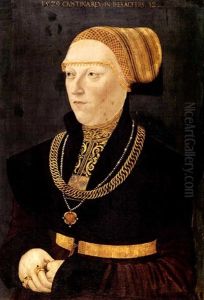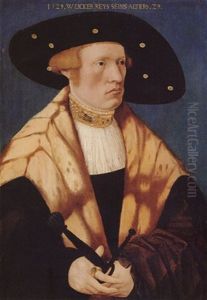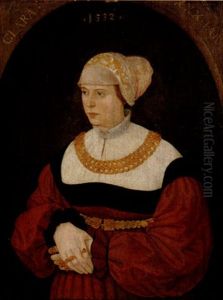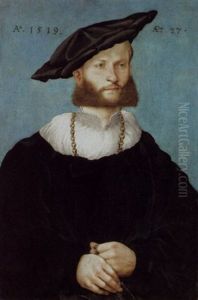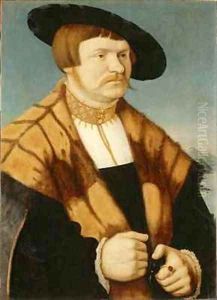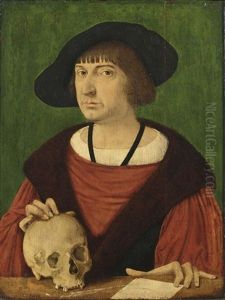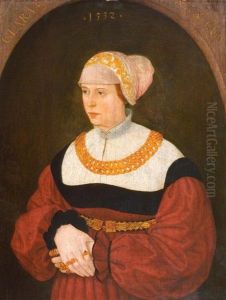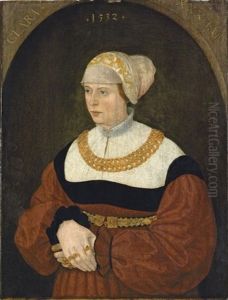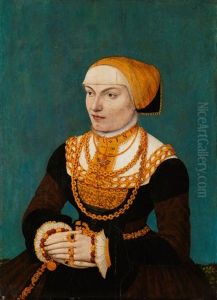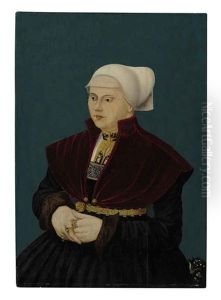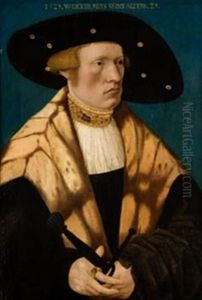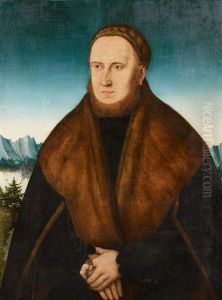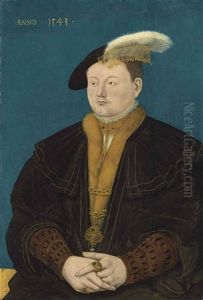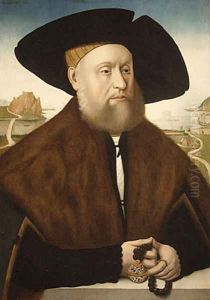Conrad Faber von Creuznach Paintings
Conrad Faber von Creuznach, also known as Conrad Faber, was a German portrait painter of the Renaissance whose life and work are best understood within the context of the 16th century European artistic milieu. Born around 1500 in the region of Kreuznach (now Bad Kreuznach) in the Holy Roman Empire, Faber's early life is not well-documented, which is common for many artists of the period. He is believed to have been active in Frankfurt am Main from about 1525 until his death.
Faber’s work is characterized by its attention to detail, rich colors, and clear, realistic depiction of subjects. He primarily painted portraits, and his oeuvre includes several significant family portrait groups, which are among the earliest examples of this genre in German art. His portraits are noted for their intricate detail, particularly in the rendering of textiles and clothing, which reflects the wealth and status of his sitters. He was also known for his ability to capture the individual personalities and characteristics of his subjects, which was a departure from the idealized portraiture of the earlier periods.
Faber's clientele were mainly the affluent bourgeoisie, nobility, and clergy, indicative of the rising status of the middle class and the increased demand for individual portraiture during the Renaissance. His work provides a valuable insight into the fashion, culture, and people of his time. Unfortunately, many details about Faber's training, influences, and personal life remain unknown. However, his portraits have been well-preserved and provide art historians with tangible links to the social and cultural fabric of 16th-century Germany. The exact date of Faber's death is uncertain, but it is believed that he died between 1552 and 1553 in Frankfurt am Main.
